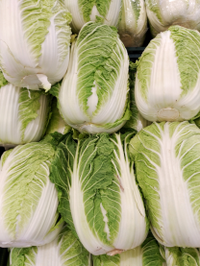
Photo from wikipedia
Abstract Quickly determining accurate crop genetic parameters for crop model applications can be difficult. In this study, we coupled the independent automatic parameter optimization tool PEST (Parameter ESTimation) with the… Click to show full abstract
Abstract Quickly determining accurate crop genetic parameters for crop model applications can be difficult. In this study, we coupled the independent automatic parameter optimization tool PEST (Parameter ESTimation) with the crop growth model of DSSAT (Decision Support System for Agrotechnology Transfer) using the R programming language. A new DSSAT-PEST package was developed to perform automatic optimization of the crop genetic parameters. In addition, the PEST tool was modified to reduce problems associated with local optima and model runtime. The DSSAT-PEST package was used to estimate the genetic coefficients for five crops (i.e., maize (Zea mays L.), soybean (Glycine max L. Merrill), wheat (Triticum aestivum L.), rice (Oryza sativa L.), and cotton (Gossypium hirsutum L.)) based on existing experiments in the DSSAT database. Three parameter optimization methods were compared based on their efficiency and accuracy for estimating crop genetic parameters: 1) the traditional trial-and-error method (default crop genetic parameters in the DSSAT database); 2) DSSAT-GLUE (general likelihood uncertainty estimation, an existing parameter estimation package in DSSAT), and 3) DSSAT-PEST. The DSSAT-PEST optimization method produced reasonably accurate optimization results and improved optimization efficiency compared with the other two methods. For example, the average absolute relative error (AREs) between relevant field observations and model simulations obtained with DSSAT-PEST were 12 %, 7 %, 18 %, 4 %, and 19 % for the five crops, respectively, which were similar to or better than the results with DSSAT-GLUE and the default method. Additionally, average runtime for DSSAT-PEST was about 65 % of the runtime for DSSAT-GLUE. In general, the DSSAT-PEST package performed similarly to or better than the traditional trial-and-error method and DSSAT-GLUE in terms of both optimization efficiency and accuracy, which should promote wider application of the DSSAT model in agricultural and environmental research.
Journal Title: European Journal of Agronomy
Year Published: 2020
Link to full text (if available)
Share on Social Media: Sign Up to like & get
recommendations!